Elon Musk Is a Naive Young Man Who Has Read a Lot of Science Fiction
Interview for "Vechernaya Moskva" newspaper
An interview was published on the site of "Vechernaya Moskva", in which the writer Alexander Novikov and I discussed the question of what string transport is and how it will change the world. Article is available here (in Russian): https://vm.ru/interview/807583-izobretatel-anatolij-yunickij-ilon-mask-naivnyj-yunosha-kotoryj-nachitalsya-fantastiki
Inventor Anatoli Unitsky: Elon Musk Is a Naive Young Man Who Has Read a Lot of Science Fiction
Newspaper "Vechernaya Moskva" continues a series of conversations about the future: in one of the previous issues, we published a conversation between the columnist Alexander Nikonov and the forecaster Sergey Pereslegin (in Russian). Today we give the floor not to a theorist, but to an engineer, whose projects may seem to many like chapters from a popular novel of the middle of the last century. But the future was always reserved for people whose ideas were hard to accept. Anatoli Unitsky is one of such inventors.
At the very beginning of the XIX century, the first experiments with electricity and steam began. However, it wasn't until a hundred years later that the planet was entangled with railways and wires, and the world became modern. Well, then, the Soviet inventor of new cities and fundamentally new transport that will change the image of the planet, who began working on his innovations half a century ago, risks living until the first dawn of a new era.
Meet Anatoli Unitsky, the author of two hundred inventions, a member of the USSR Cosmonautics Federation, and most importantly — an engineer of the old, exploring temperament. As school children, we read about his incredible breakthrough inventions in the journal "Technology for youth". And now my generation is already rolling towards pre-retirement age, but the future is just cracking the shell of the old world with its yellow beak. Like Tsiolkovsky, he has surpassed his time for almost a century. In the middle of the twentieth century, Unitsky came up with an incredible way to go into space without a rocket (the Great Planetary Ring), and then, moving towards its implementation and solving engineering problems along the way, invented the so-called string transport. But this invention is at least half a century ahead of time, because only recently five experimental string transport lines were launched in Minsk, the author's homeland, and the first commercial routes are being designed in the United Arab Emirates.
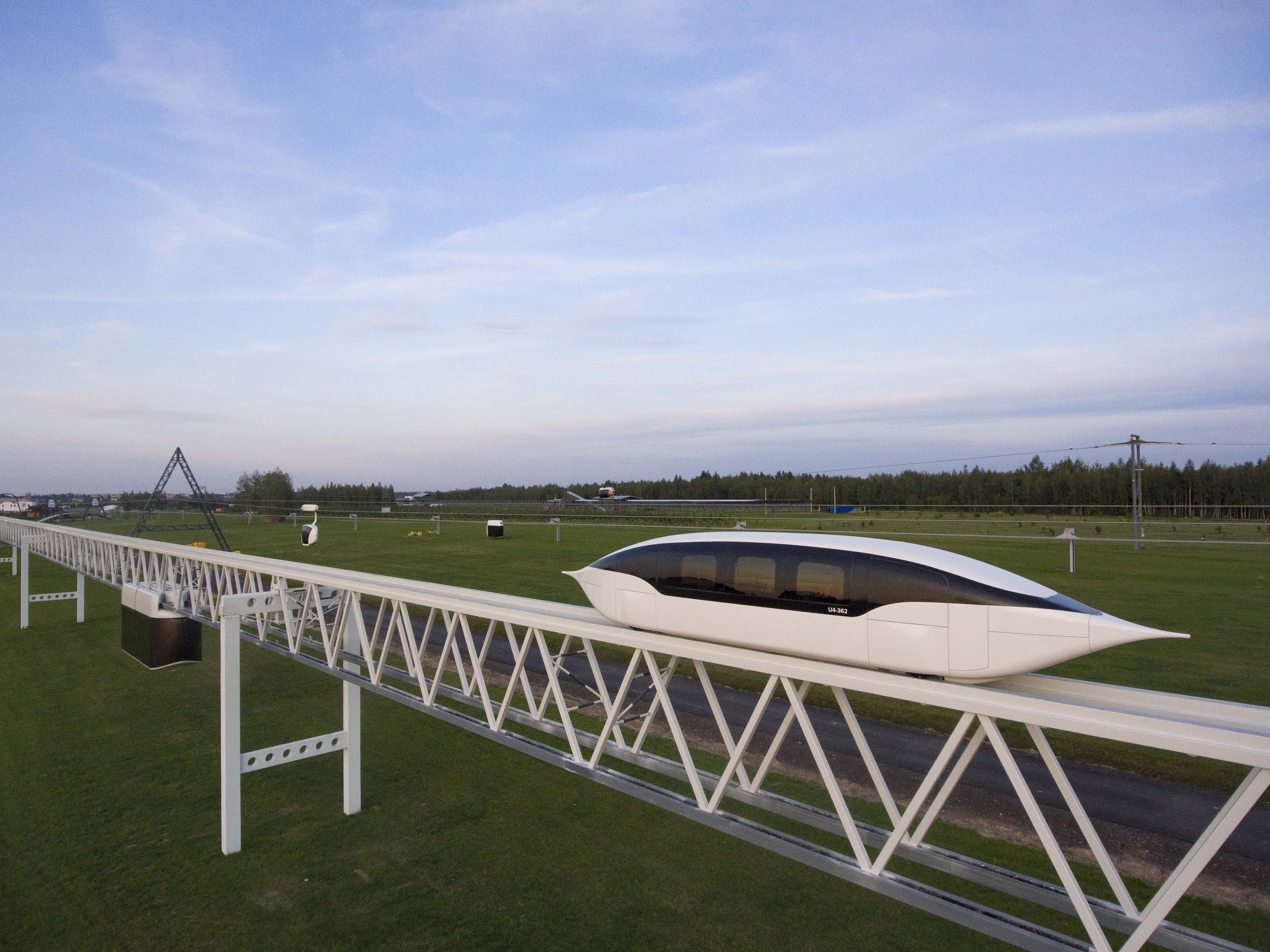
— So what is "string transport"? And how will it change the image of civilization?
— This is the fastest and most environmentally friendly transport, comparable in speed to an airplane, which in the future will replace not only railways, but also cars… And it will change the image of civilization because everything is determined by connectivity, that is, transport and logistics communications. And so today we live in "spots" of cities that are connected by fast air transport and slow other modes of transport. String transport is a cross between both. Therefore, cities will become linear. The city's web will cover the entire planet.
— Death to the past!.. And now everything in proper order. Why "string"?
— From the word "string". Imagine a series of high supports, like those at power transmission lines or bridge pillars. Two thick strings are stretched between them.
As a matter of fact, there are no unstretched strings: it is the pre-tension that makes the wire a string. Only not wires are stretched between our supports, but compact beams with a crafty concrete and steel filling. It is on these two parallel rail-beams that the car rushes from support to support. On iron wheels on a steel rail.
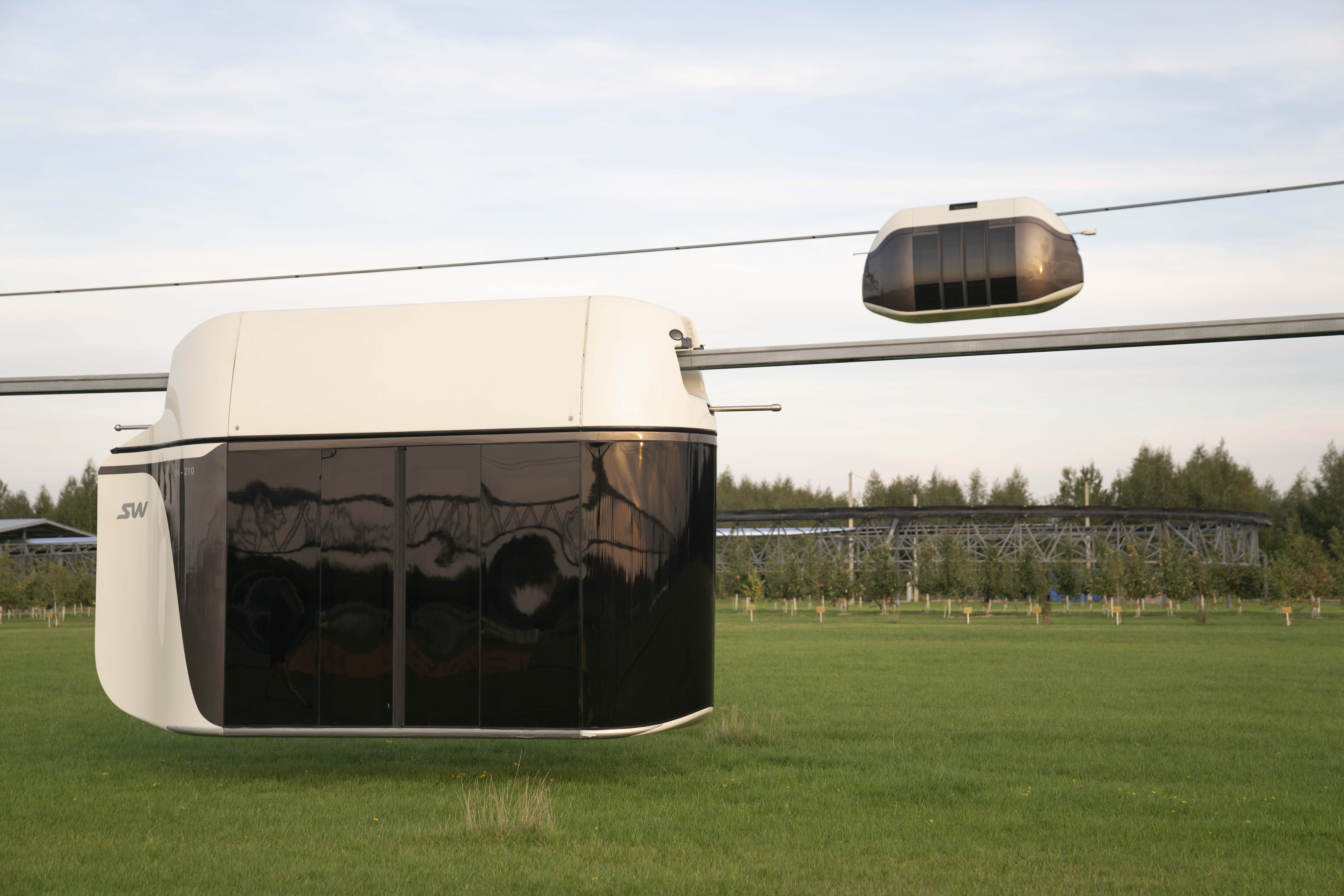
— Isn’t it too primitive for a breakthrough technology?" You just lifted the railway off the ground! Where's the breakout? There Elon Musk is dreaming about magnetic cushions. And China already has a live train on a magnetic cushion. It travels at 400-km/h speed from the airport to Shanghai.
— It is going to a dead end... The genius of German engineers from the firm "Siemens" has created this road, which is only 30 kilometers long. And "Siemens" does not build more of such roads. It turned out to be unprofitable. Because the overall efficiency factor of transport on a magnetic cushion is only 15 percent — like in a locomotive! And what are the current trends? Saving of resources! Green energy! Global warming! Therefore, best regards to Elon Musk with his dreams, this young man is too naive, having read a lot of science fiction. Look here… The magnetic suspension acts as a wheel. But the efficiency factor of a conventional steel wheel as a mover is 99.8 percent.
This means that with an effort of two kilograms, I can push a cart weighing a ton along the rails. What about the magnetic wheel? What is pulling this train forward? A traveling electromagnetic field. In fact, it is an electric motor deployed in a line, where the stator is a roadbed and the rotor is a train. However, it is known from the school physics course: the smaller the gap between the rotor and the stator, the less losses are. In electric motors, this gap is a tenth of a millimeter. You can't do that with a train, because if it touches at that speed, it's a disaster, and everyone's in a mess! Therefore, the train has a gap of a centimeter! That is, half of the supplied energy is lost only in the gap! In addition, huge technical difficulties with the magnetic suspension and acceleration system, all this is hidden in a special skirt that covers the load-bearing beam of the transport overpass and creates additional aerodynamic drag… And it turns out that the magnetic cushion does not solve problems, but only creates them. The question is: isn't it easier to replace it with a wheel in such case?
— Then why did they make a Maglev train at all?
— They're engineers, not economists. They were paid — they did. I think it was an image project for China — for the first time in the world they have implemented what science fiction authors wrote about. But there will be no such madness anywhere else. Because the energy loss from aerodynamic drag on just one skirt in a magnetic train is greater than the energy cost of moving our string train!
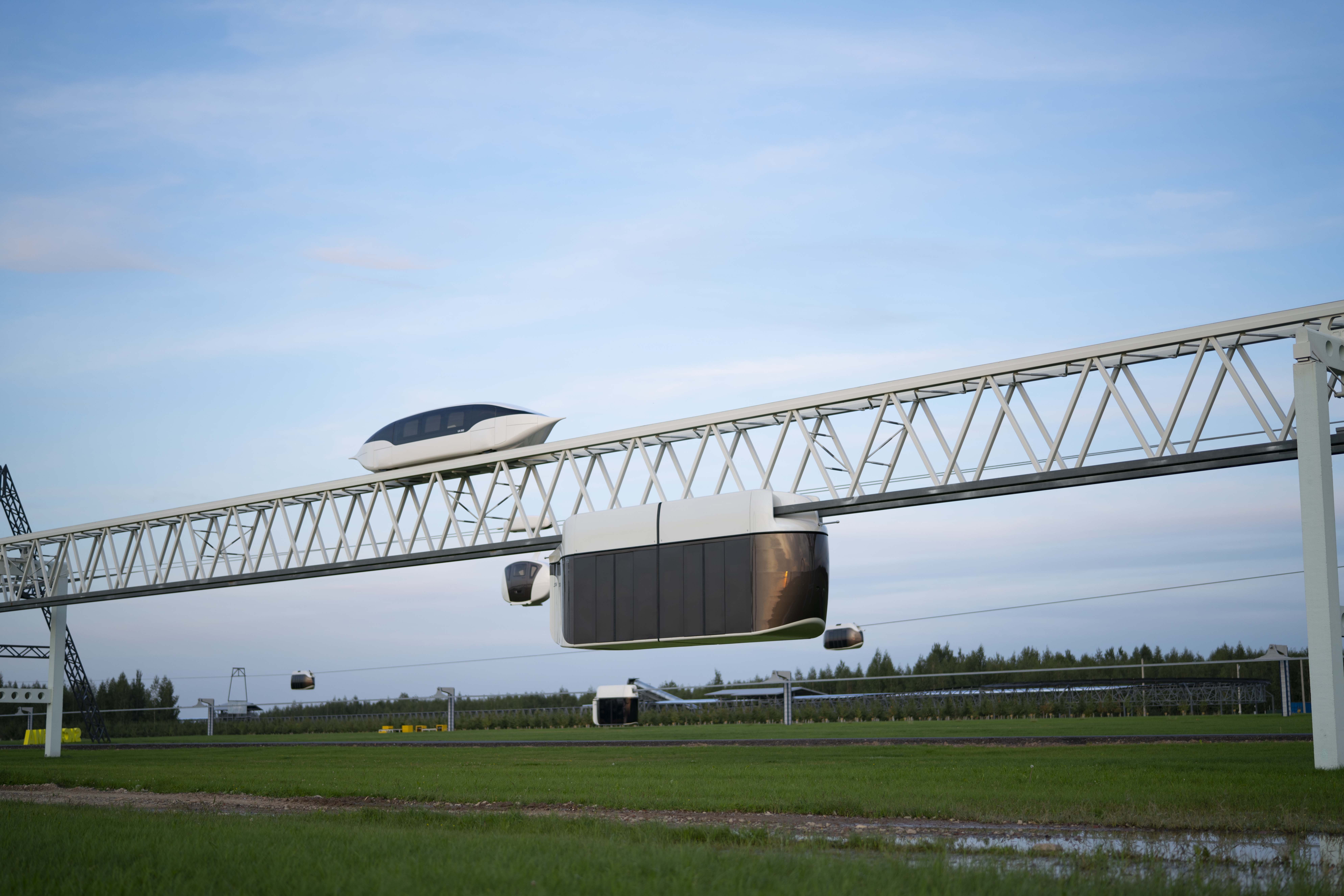
— Let us suppose so. However, in addition to dreams of magnetic trains in vacuum tubes, Musk has a real electric car. Serial. On wheels, as you like.
— I don’t like it. Our electric mobile unibus (as our string transport car is called) is seven times more efficient than Elon’s Tesla. Because a steel wheel on a steel rail has a negligible contact spot, and consequently, rolling resistance — unlike a rubber tire, which spends most of its energy on rubber deformation and air heating in the tire. But the most important thing is not this!
The main problem is that at high speed (above 300 kilometers per hour) 95 percent of energy is spent on overcoming air resistance! And the magnetic cushion does not help here, but only worsens the aerodynamics. For reference: aerodynamic drag is proportional not even to the square, but to the cube of speed. What does it mean? If you drive a car at 100 kilometers per hour, you spend 20 kilowatts of power and five liters of gasoline per hundred kilometers. We can spare. But if you drive the same car at a speed of 500 kilometers per hour, then with a speed increase of only five times, your power consumption jumps up by 125 times, upto 2500 kilowatts! These are five tank engines. And now you need 600 liters of fuel for an hour's drive. Not five, as before. Feel the difference! That's why car designers try so hard to reduce the head drag coefficient. But they are hindered by the road! Because the roadbed creates the so-called screen effect — air is sucked in and swirled between the road and the car bottom.
But it is only enough to raise the vehicle above the ground (just by a few meters) and the screen effect disappears, the aerodynamics improves by 2.5 times. Our train flies in the air almost like an airplane, supported by two string rails. Therefore, our speeds are 500 kilometers per hour, like in a turboprop aircraft. An hour and a half — and you are in St. Petersburg. It takes 13 hours to travel from Moscow to Vladivostok, which is one night in a sleeping car. Now it is 9 hours by plane to Vladivostok, there is a small time difference, but a unibus ticket will cost several times cheaper than for a plane. We have already calculated the cost. This is the whole trick — we have been blowing our unibuses in wind tunnels in St. Petersburg for a quarter of a century and have achieved a unique streamlining. There is such a car — "Bugatti", this is the fastest commercial car with an engine power of 1500 horsepower and a maximum speed of only 400 kilometers per hour. For a speed of 500 kilometers per hour, it will need an engine with a capacity of almost 3000 "horses". And our unibus reaches this speed with an engine with of only 400-horsepower capacity! In addition, not two people are riding it, but twenty. That's what means aerodynamics without the screen effect of the roadbed!
— Is it still fiction for children's magazines or is it an existing technology?
— We have already designed, built and tested 11 types of cars, and five of them have received international certificates! Passenger unibuses, unicars, cargo unitrucks, UNICONT for container transportation, for which there are now a lot of pre-orders. We are already one foot in the future!
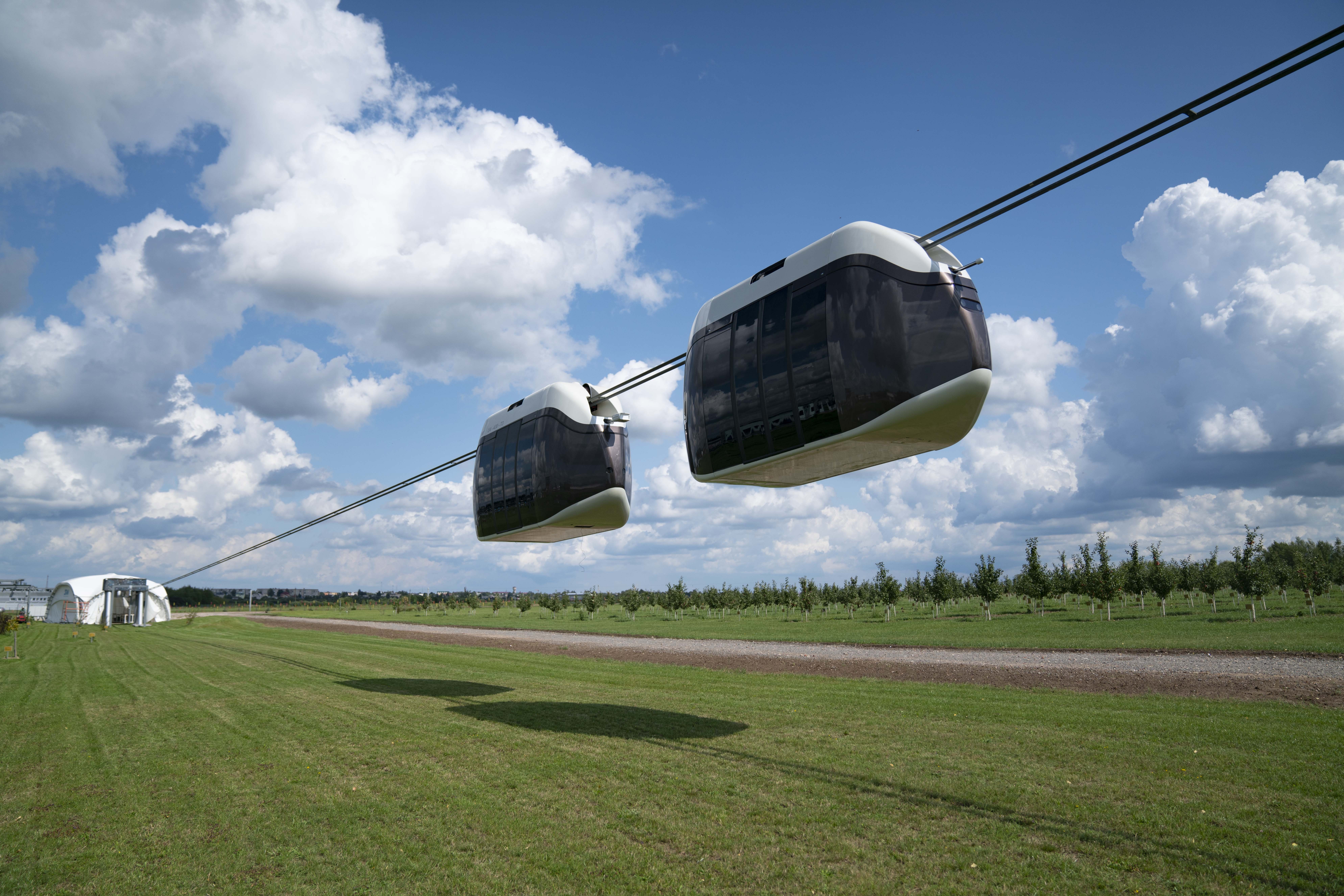
— What are other advantages of string transport, in addition to fuel saving?
— Imagine an ordinary bridge. The wheels of a vehicle, whether it is a car or a train, travel along two narrow tracks, and the rest of the track space is wasted. At the same time, 90 percent of the load on the bridge supports is created by a massive concrete roadbed. The bridge holds itself, and transport accounts for only 10 percent of its payload. It is the same with an ordinary roadbed, but it is even worse there — the roadbed lies entirely on the ground, forming a low-pressure dam in the area, which violates the hydrology of the environment. Therefore, we often see waterlogging on one side of the road, and unwatering on the other. Do you know how much space roads take up on the planet? If by some miracle we could get rid of all roads (railways and asphalt) we would free up an area equal to five territories of Great Britain. So let's do it! We will suspend the roads on light supports and leave only tracking ruts for them! Overhead ways! Then we will have a most lightweight structure, the running kilometer of which is much cheaper than any other road. A kilometer of a conventional highway in an overpass design now costs about 100 million euros. A kilometer of high-speed "string" will be tenfold less costly.
In addition, roads constantly consume funds, they need to be repaired and cleaned. Every year, humanity spends billions of dollars clearing snow from railways and highways. And string tracks don't need it, there's just nothing to clean: there's no roadbed, just two strings that don't hold snow! And the design service life of such a road with minimal supervision is about a hundred years.
— What about safety?
— Ordinary, ground roads kill people massively — every year about one and a half million people die on the roads, more than 10 million are injured and become crippled. String transport almost completely eliminates accidents, it is located above the ground on the "second level", it is automated and does not need drivers. In this sense, it is safer than railways and aviation, because most of the accidents there are caused by the human factor.
Thus, by switching over to string transport, we will save more than a hundred million lives in just one century. I have already spoken about the economy, and I will say more. There are about a billion cars in the world right now. In terms of cargo and passenger traffic, they can be replaced by only 10 million string unibuses. And in just a quarter of a century, this will save for the planet more than 100 billion tons of fuel costing 100 trillion dollars. This fuel will not burn, will not spoil the air — now everyone is concerned about global warming. At the same time, the full transition of civilization to an economical SkyWay transport will not cancel private transport. Personal and family unibuses will also move along the strings.
— Oh! I feel like this is really going to change the landscape…
— Of course! Now our cities and the entire infrastructure of civilization are being focused on roadbed transport. Changing the character and speed of movement will completely change everything! First, the very concept of hard-to-reach places will disappear. Russia is rich in mineral deposits that are either not developed or abandoned: because of transport inaccessibility, their development is unprofitable. In Russia, there are places where even gold mining is unprofitable. It is expensive to lay a railway there, it will not pay off: in any road, the greatest share of the cost is the road ballast. It is even more expensive to transport by plane, and there may be no flying weather for weeks in our North. And freight string transport removes all the problems — it is only necessary to install supports and it would be possible to stretch strings to any point! Secondly, a high-speed factor will completely change the concept of the city.
Cities will become linear. In other words, the land that is located near the transcontinental and other high-speed strings will be highly valued. In fact, the urban agglomeration turns into a network. Looking into the future, we will see towers — stations of string transport with a one-storey buildings at the bottom. And all urban transport is also switching to a string, only slow one. Only pedestrian and bicycle lanes remain on the surface of the earth, and the pods of string "trams" of local communication pass above them. They are arranged in a network so that a person can get to any point with a maximum of one transfer. By the way, I have developed this concept of linear-chess planning of cities more than 20 years ago, at the request of the United Nations...the string revolution will change the very psychology of man, his perception of space, the concept of job search. Today, a metropolitan resident tries to find a job closer to home, because he overcomes some 20 kilometers from home to workplace within an hour. By the middle of this century, it will be possible to live 400 kilometers from the place of work and get to it in less than half an hour, given the access to the high-speed string in a local string "tram".
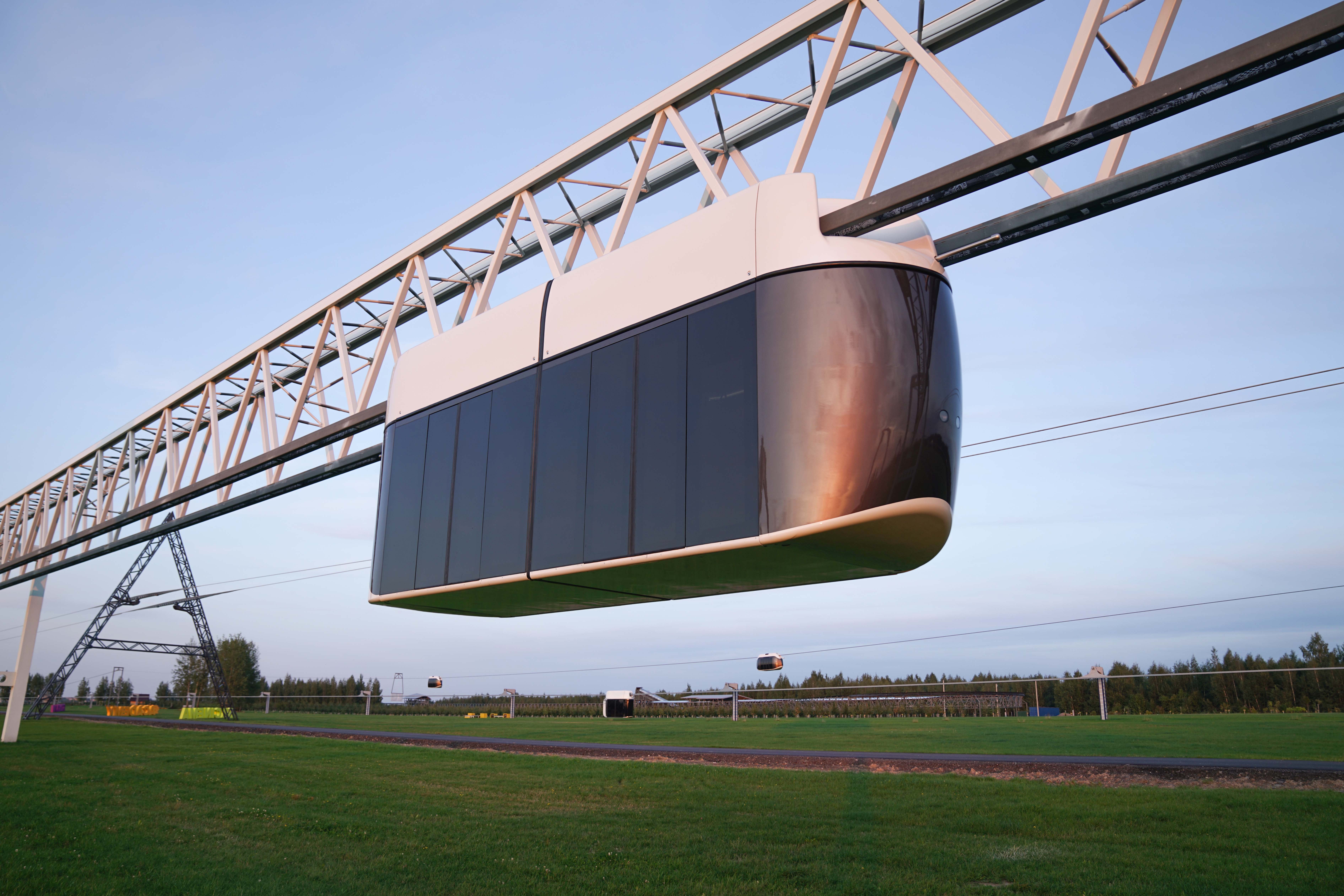
— You said that humanity's need for fuel would plummet. But this is bad for Russia. We live based on oil.
— Well, if you are so happy to sell raw materials, then do not forget that the main resource of this century will not be oil, but fresh water. And it is Russia that has the largest reserves of fresh water in the world. Water scarcity is already experienced by Africa, India and China. In our country, this water is ineffectually drained into the Arctic Ocean by huge Siberian rivers. In addition, the quality of our water is unique, for example, in Baikal or Taimyr. This water can be drunk without any purification.
This is firstly. Secondly, Southern countries (for instance, India) need cold almost more than Russia needs heat. But! If the heating process is energetically profitable, since its efficiency is 100 percent (the physics of our world is such that all energy is eventually converted into heat), then the cooling process is not so nice: its efficiency is much lower. That is, you need energy for cooling, and again you need to burn fuel. And we have a free cold in Siberia! The only question is how to sell it to the same India! You can freeze Baikal water for free — in winter. And send it to India in thermal containers. In an ordinary train, the ice, of course, will not reach the destination — it will melt. But it will be delivered for sure on the strings for a few hours. And now we are selling in a hot country not only the scarce clean fresh water, but also cold, which can be used, for example, for cooling premises instead of energy-consuming air conditioning. Two birds with one stone, you know?!
We would like that…
REFERENCE
Anatoli Unitsky (born April 16, 1949) is a Soviet, Belarusian and Russian engineer (since 1972), inventor (since 1977), and entrepreneur (since 1988). Author of more than 140 inventions (half of them made in the Soviet era, in many cases — in collaboration with other engineers, 30 of which were implemented in the national economy of the USSR with a total economic effect exceeding 100 million Soviet rubles), 18 scientific monographs and more than 200 scientific papers. Developer of Unitsky String transport project (UST). Author of the concept of a non-rocket transport system (since 1977) for exploration of near-Earth space — General Planetary Vehicle (GPV). Member of the USSR Federation of Cosmonautics (since 1986). Member of the public organization of the Russian Academy of natural sciences (since 2000). Author of more than 200 patents for inventions, including those registered abroad.
By Alexander Nikonov